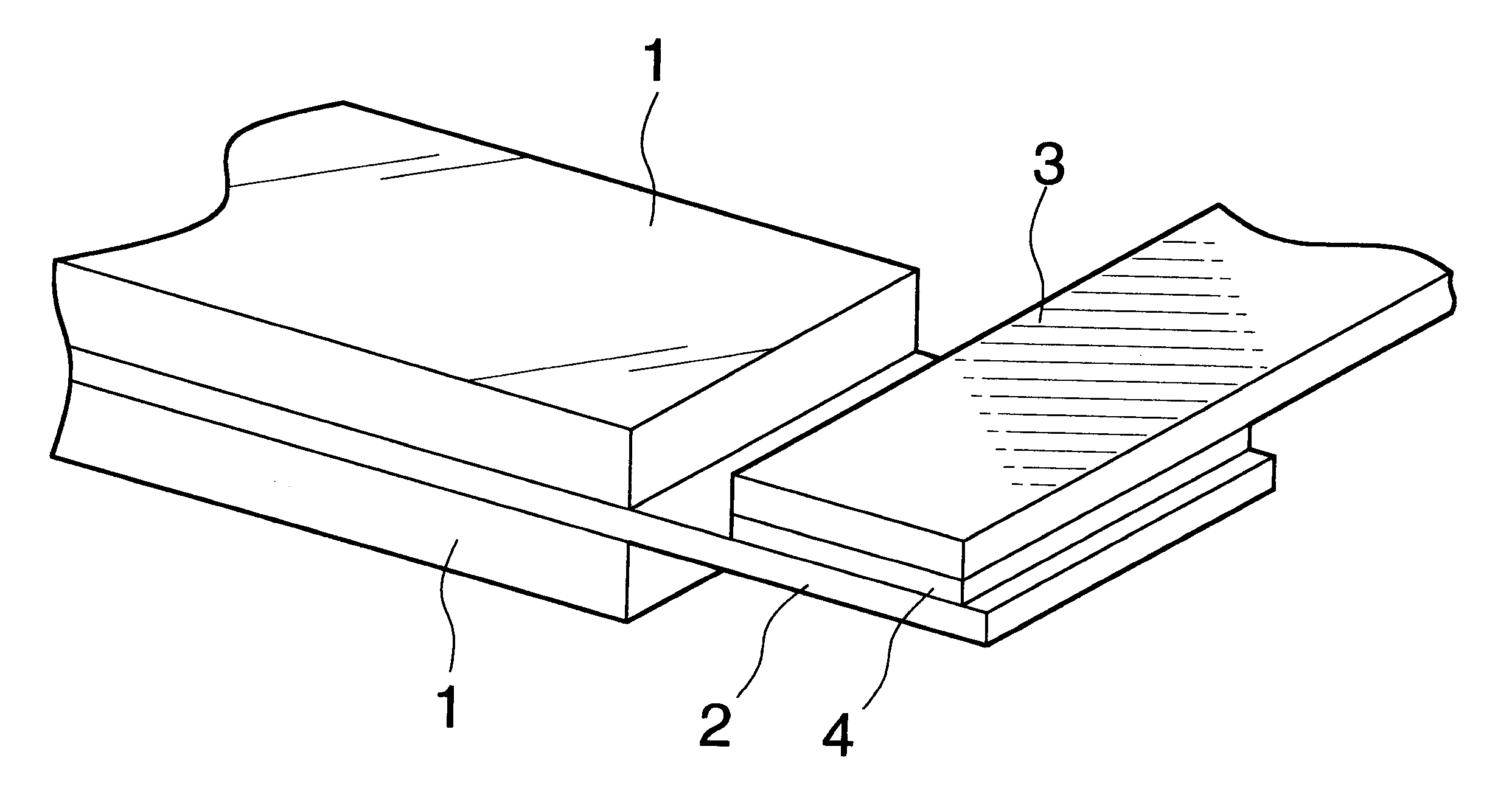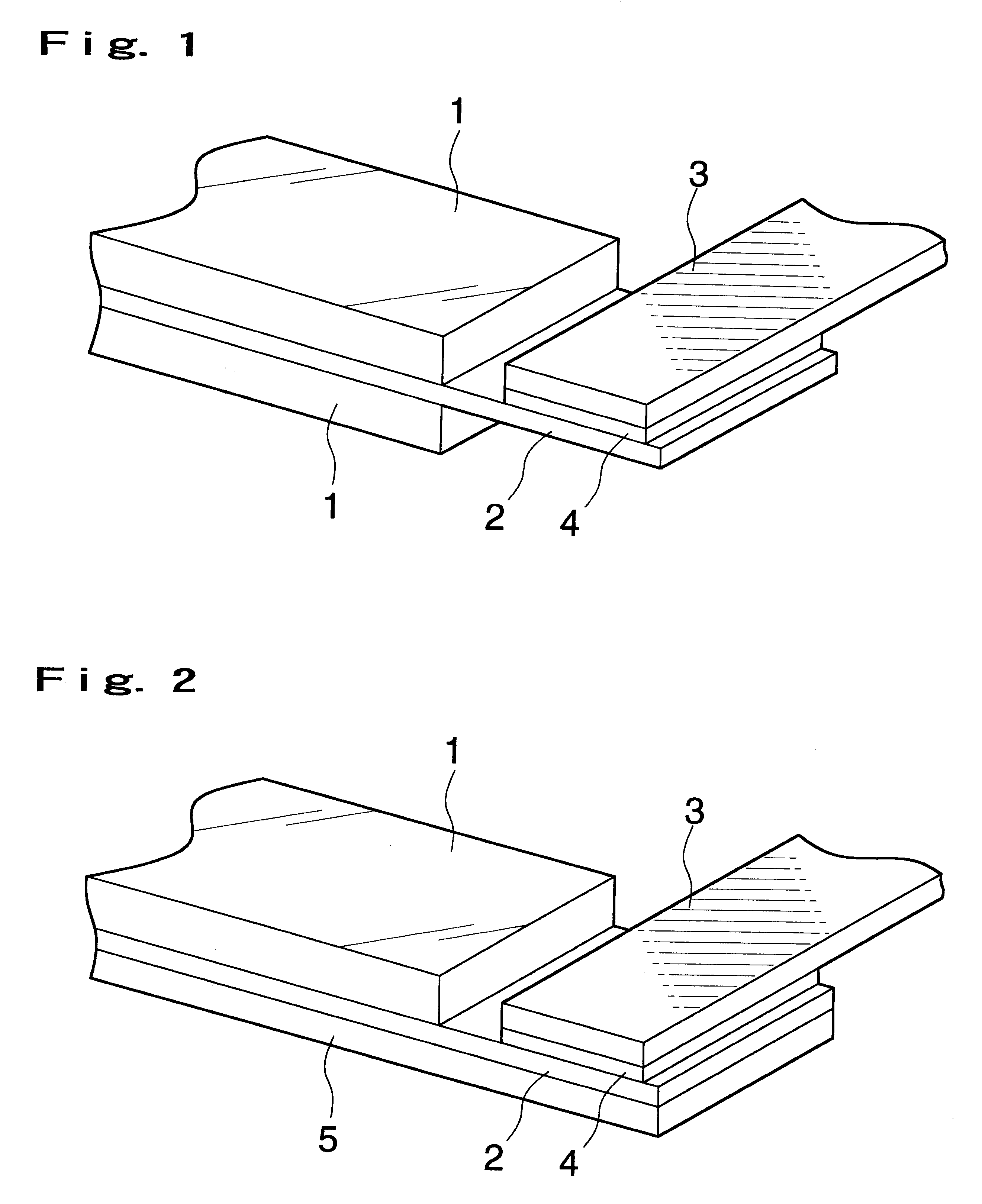Electrode for battery, method of manufacturing the same and battery
a technology of electrodes and batteries, applied in sustainable manufacturing/processing, non-aqueous electrolyte cells, cell components, etc., can solve the problems of inability to weld tabs with thin film collectors, and inability to meet the requirements of large-scale welding devices
- Summary
- Abstract
- Description
- Claims
- Application Information
AI Technical Summary
Benefits of technology
Problems solved by technology
Method used
Image
Examples
example 1
A negative electrode of a connection structure shown in FIG. 1 was manufactured. That is, FIG. 1 is a partial perspective view showing a connection structure of a collector and a tab of an electrode manufactured in Example 1.
(Formation of an active material layer (1) on a collector (2))
As shown in Table 1, 8 parts by weight of the binder was dissolved in 150 parts by weight of the solvent NMP (N-methylpyrrolidone), and 86 parts by weight of the active material and 6 parts by weight of the pulverized product of expanded graphite were added. These were mixed with a hyper-mixer. Subsequently, the mixture was subjected to an ultrasonic dispersing machine to form a coating-material. The coating-material is applied onto one surf ace of a strip collector (2) made of a copper foil having a thickness of 18 .mu.m, and dried to form an active material layer. In the same manner, an active material layer was formed on another surface of the copper foil. The coating amount was the same on both th...
example 2
A positive electrode of a connection structure shown in FIG. 2 was manufactured. That is, FIG. 2 is a partial perspective view showing a connection structure of a collector and a tab of an electrode manufactured in Example 2.
In this Example, a product in which aluminum was deposited to a thickness of 1 .mu.m on a PET film (5) having a thickness of 11 .mu.m was used as a collector (2).
(Formation of an active material layer (1) on a collector (2))
As shown in Table 3, 4 parts by weight of the binder was dissolved in 67 parts by weight of the solvent, and 88 parts by weight of the active material (LiNi.sub.0.8 Co.sub.0.2 O.sub.2) and 8 parts by weight of the conductive agent were added. These were mixed with a hyper-mixer. Subsequently, the mixture was subjected to an ultrasonic dispersing machine to form a coating-material. The coating-material was applied onto the collector (2) formed on the PET film (5), and dried to form an active material layer. The coating amount was 20 mg per cm....
PUM
 Login to View More
Login to View More Abstract
Description
Claims
Application Information
 Login to View More
Login to View More - R&D
- Intellectual Property
- Life Sciences
- Materials
- Tech Scout
- Unparalleled Data Quality
- Higher Quality Content
- 60% Fewer Hallucinations
Browse by: Latest US Patents, China's latest patents, Technical Efficacy Thesaurus, Application Domain, Technology Topic, Popular Technical Reports.
© 2025 PatSnap. All rights reserved.Legal|Privacy policy|Modern Slavery Act Transparency Statement|Sitemap|About US| Contact US: help@patsnap.com


